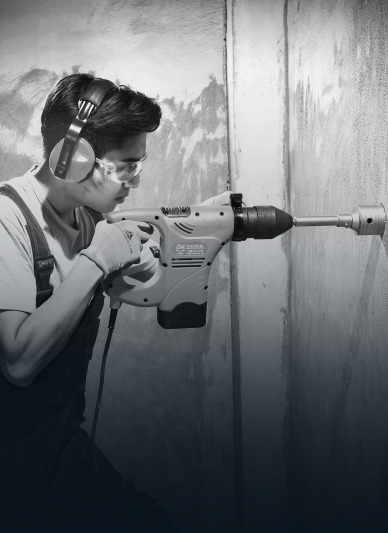In various industries, from woodworking and masonry to metalworking and sculpture, the Steel Chisel remains a widely used and trusted tool. While many focus on tool design, handle type, or edge shape, the material of the Steel Chisel plays a major role in determining its overall performance and durability. The type of steel selected for manufacturing a chisel affects not only its strength and sharpness but also how long it will maintain those qualities during repeated use.
One of the common materials used in Steel Chisel production is high-carbon steel. This type of steel is known for its ability to hold a sharp edge for extended periods. A high-carbon Chisel tends to offer solid cutting capabilities, making it a popular option for heavy-duty applications such as carving, cutting, or breaking harder materials. However, while it provides good hardness, it may require careful storage to avoid corrosion when exposed to moisture.
Another option frequently seen in Steel Chisel manufacturing is alloy steel. Alloy steel includes elements like chromium, vanadium, or molybdenum, which contribute to improved toughness, hardness, and resistance to wear. It is made with alloy steel is often more suitable for outdoor or industrial use, where exposure to rough surfaces, moisture, and impact forces is unavoidable. The added elements help the Steel Chisel retain its structure under demanding conditions.
Tool steel is also a preferred material for certain types of Steel chisels. Tool steel is engineered specifically for tools exposed to high levels of stress and heat during operation. It is crafted from tool steel, usually offering reliable hardness combined with toughness, allowing it to endure both impact and prolonged usage without losing shape or becoming brittle. Its versatility makes it useful in both light woodworking and heavy-duty construction tasks.
The method of manufacturing further influences how well a Steel Chisel performs. Forging is one such method, where steel is heated and hammered into shape. A forged one benefits from a refined grain structure, which typically results in better strength and longer-lasting durability. Compared to cast or machined chisels, forged versions often handle impact more efficiently and are less prone to cracking.
Heat treatment processes are equally important in determining the quality of a Steel Chisel. Through controlled heating and cooling cycles, manufacturers adjust the hardness and toughness of the steel. A well-treated one achieves a balance between edge retention and flexibility, ensuring it stays sharp while resisting breakage. On the other hand, improper heat treatment can make it either too brittle or too soft, reducing its efficiency and service life.
Routine maintenance also affects the longevity of a Steel Chisel. Regardless of the steel type, regular sharpening ensures the cutting edge remains efficient. Applying a thin layer of oil to the blade after cleaning protects against rust, particularly for high-carbon and tools, which are more sensitive to moisture. Proper storage in a dry, organized toolbox can prevent accidental damage and extend the lifespan.
Selecting the right material for a Steel Chisel depends largely on the specific task at hand. For example, a mason working with stone might prioritize toughness and impact resistance, while a woodworker may prefer a chisel that sharpens easily and holds an edge for precision carving. Understanding the unique properties of each steel type helps in choosing it that meets those practical demands.
In conclusion, the type of material used in a Steel Chisel directly influences its performance, durability, and maintenance needs. Whether made from high-carbon, alloy, or tool steel, each material brings different strengths suited to various environments and tasks. By considering factors like hardness, toughness, heat treatment, and care routines, professionals and hobbyists can select a Steel Chisel that delivers consistent, dependable results over time.







